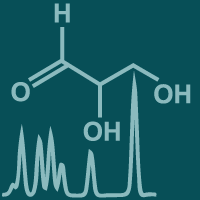Topic Editors

Application of Analytical Technology in Metabolomics
Topic Information
Dear Colleagues,
Metabolomics, as an important part of systems biology, is concerned with both targeted and untargeted analysis of endogenous and exogenous small molecule metabolites found within a biological sample. Metabolomics is a powerful approach for biomarker discovery with the technological advancement in the Analytical and identification of small molecules for early diagnosis, monitoring therapeutic response, and establishing disease pathogenesis. These cutting-edge technologies, which include accurate measurement of HPLC/UPLC, CE, HRMS, and NMR technology, can perform the detection of metabolites within minutes. The metabolomics field is gaining popularity due to the development of new Analytical methods and innovative sample processing techniques. In the light of the impressive past and ongoing development in the area of metabolomics by the use of modern analytical methods in conjunction with Analytical techniques, we believe that this Topic will bring together original research papers as well as review articles that highlight recent advances in innovative sample processing, current Analytical, and targeted & untargeted methods for bioanalysis/preclinical and clinical analysis in the field of metabolomics. Additionally, miniaturization of sample processing methods for metabolomics analysis is also welcome.
Dr. Preeti Chandra
Dr. Ugo Bussy
Dr. Raúl G. Enríquez
Topic Editors
Keywords
- metabolomics
- liquid chromatography
- mass spectrometry
- HPLC/NMR/CE
- sample preparation
- microsampling/microextraction
- biomarker discovery
- metabolic profiling
- hyphenated techniques
- metabolite identification
Participating Journals
| Journal Name | Impact Factor | CiteScore | Launched Year | First Decision (median) | APC | |
|---|---|---|---|---|---|---|

Analytica
|
- | - | 2020 | 15.6 Days | CHF 1000 | Submit |

Metabolites
|
4.1 | 5.3 | 2011 | 13.2 Days | CHF 2700 | Submit |

Toxins
|
4.2 | 7.5 | 2009 | 18.4 Days | CHF 2700 | Submit |

Molecules
|
4.6 | 6.7 | 1996 | 14.6 Days | CHF 2700 | Submit |

Cells
|
6.0 | 9.0 | 2012 | 16.6 Days | CHF 2700 | Submit |

MDPI Topics is cooperating with Preprints.org and has built a direct connection between MDPI journals and Preprints.org. Authors are encouraged to enjoy the benefits by posting a preprint at Preprints.org prior to publication:
- Immediately share your ideas ahead of publication and establish your research priority;
- Protect your idea from being stolen with this time-stamped preprint article;
- Enhance the exposure and impact of your research;
- Receive feedback from your peers in advance;
- Have it indexed in Web of Science (Preprint Citation Index), Google Scholar, Crossref, SHARE, PrePubMed, Scilit and Europe PMC.


